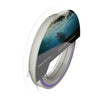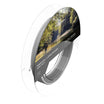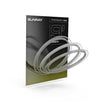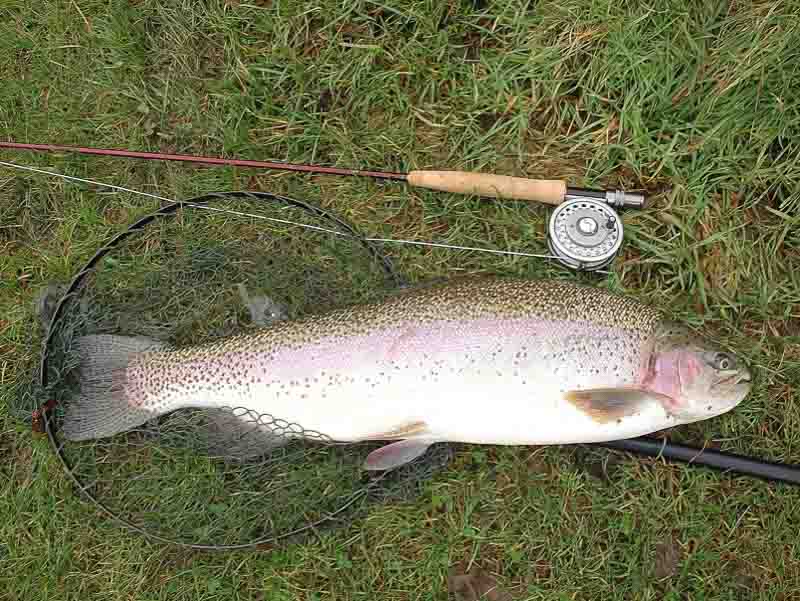by Dave Southall
March is the month that many flyfishers think about that classic Heptagenid, the March Brown, Rhithrogena germanica. This species has suffered a decline over recent years (as have many other Upwinged species) but there are encouraging signs of recovery on some rivers. Its strongholds are the big, rocky, spate rivers including many of the Scottish rivers, the Cumbrian Eden & the Welsh Usk. Hatches tend to occur around midday between March and May & in my limited experience the fish rise quite vigorously to them. This big brown fly is often confused with the very similar Large Brook Dun, Ecdyonurus torrentis, which emerges a little later in the spring (mainly May in my local North Yorkshire streams). The key distinguishing feature of the March Brown is a distinct dark mark on the centre of an otherwise pale femur. A popular fly amongst friends who regularly encounter hatches of this fly is a size 12 or 10 Jingler.
I often come across the Large Brook Dun, E. torrentis, during May. Here again a size 12 or 10 Jingler takes some beating as an imitation. Other very similar ‘Big Brown Jobs’ include the Large Green Dun, Ecdyonurus insignis, which has a very localized distribution & the Autumn Dun, E. dispar, which emerges later in the year.

- Large Brook Dun
The spinners of these species are all very similar with rusty brown bodies. A size 12 Pheasant Tail Spinner pattern is a suitable pattern when the spinners return to the river to egg-lay, when they will be seen descending to the river to dip their abdomen in the surface.

- Large Brook Spinner
One fly that can be easily confused with the above species & which is not a Heptageneid, is the Turkey Brown, Paraleptophlebia submarginata, which is common on many of the North Yorkshire Moors streams that I fish & I’ve also seen good numbers on the Yorkshire Don. It emerges from late April through to July & the dun looks like a small, dark March Brown/Large Brook Dun. They are less significant to the flyfisher as emergence from the nymphal exoskeleton often takes place partially or entirely out of the water on emergent rocks or vegetation. Nevertheless I’ve seen fish taking them & I fish with a size 14 March Brown imitation.

- Turkey Brown Dun
Also in May I expect to see good hatches of Olive Uprights, Rhithrogena semicolorata, on many of the stony rivers that I fish. This is a smaller fly than its larger cousins & the wings lack their brown mottling. Emergence can take place throughout the day & a size 14 Olive imitation is a good choice when they do so. The dark mark on the femur & broad head clearly distinguishes it from the similar but slightly smaller Large Dark Olive, Baetis rhodani.

- Olive Upright Dun (minus a tail)
In June & July the Yellow May Dun, Heptagenia sulphurea, emerges on many stony rivers. Many writers have questioned whether trout find them palatable, but on my Yorkshire streams there is no doubting that the fish feed on them. It may be the fact that hatches often occur as trickles on many rivers that make some anglers doubt their importance as trout food. The duns are a very distinct bright yellow & a size 12 Oliver Edwards’ Yellowhammer (a yellow Klinkhamer) works for me when they are emerging.

- Yellow May Dun
What about the nymphs? They are ‘Stone Clingers’ with sturdy legs & flattened, triangular, streamlined bodies. It is possible to tie realistic imitations as does Oliver Edwards, but I just fish a Black Bead-head Hare’s Ear nymph with a large bead at the head to give the triangular shape & sometimes Rubber Legs.

- Hepta nymphs
A deep knowledge of entomology is not essential for success in fly-fishing, but it can help at times & is a fascinating activity in its own right. My good friend Stuart Crofts now spends more time in his studies of aquatic invertebrates, particularly Caddis Flies, than he does fishing!
Please note that hatch times can vary significantly depending on the latitude & altitude of the river.
































